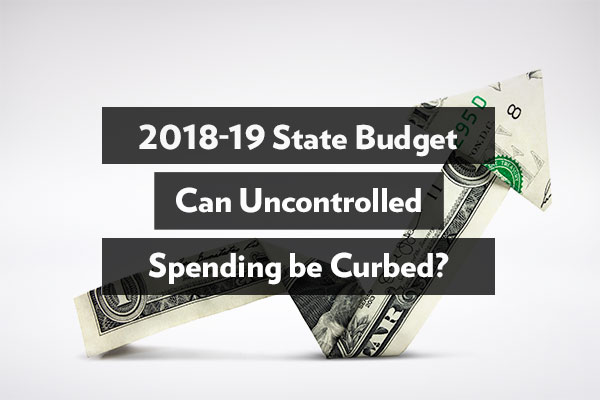Media

Six Things to Know About Pa. House Budget
The state budget is on the move. Earlier today the House Appropriations Committee voted to advance a $32.7 billion 2018-19 spending plan to the full House for its consideration. The legislation—House Bill 2121—is expected to receive a vote tomorrow.
Lawmakers can improve upon this latest budget proposal—and set the course for future budgets—by restraining spending and advancing the Taxpayer Protection Act (House Bill 110). Other improvements would include embracing criminal justice reform and implementing work and community engagement requirements to help create a more prosperous and financially secure Pennsylvania.
Here are six things to know about the proposal.
- Spending growth exceeds the Taxpayer Protection Act cap. The budget plan increases General Fund spending by more than $718 million—an increase of 2.2 percent. (Note that House leaders place the increase at 1.7 percent—adding $159 million of “2017-18 spending enacted in 2016-17” to the baseline.
Under the Taxpayer Protection Act, spending could rise by approximately $422 million, or 1.32 percent. In other words, General Fund spending may exceed the TPA cap by nearly $300 million.
- The budget does not raise taxes or fees on working families. The House proposal does not include any income or sales tax hikes. Gov. Wolf’s punitive severance tax proposal is left out as well. This is great news for working Pennsylvanians, who already shoulder one of the highest tax burdens in the country.
- Next year's budget will be more difficult. Under HB 2121, about $351 million in Medicaid payments come from one time revenues, whille millions more in Medicaid funds will be moved out of the General Fund budget and into the state’s shadow budget. Additionally, debt payments on bonds issued against the Tobacco Settlement Fund and for PlanCon start coming due in FY 2019-20, among other cost shifts.
- The budget increases Pre K-12 education spending by more than $450 million. The increases include $223.5 million for pensions, $100 million for basic education, $20 million for pre-k programs, and $15 million for special education. The additional money will add to Pennsylvania’s record revenue per student figure, which is nearly $18,000—a sum far above the national average.
- School choice expansion. The state budget includes raising the cap on the Educational Improvement Tax Credit (EITC) by $25 million, which is a significant win for Pennsylvania's families. Lawmakers can build on this proposal by adopting an automatic escalator for the EITC & OSTC programs to give students an alternative to the state's underperforming and dangerous schools.
- Transformative reforms still possible. As we noted last week, Pennsylvania is staring down a number of significant policy changes over the next several years. These changes will create large holes in the state budget if left unaddressed. While HB 2121 does not yet include policy and process reforms that will make future budgets easier to balance, there's still time to adopt such changes to drive down government's costs.